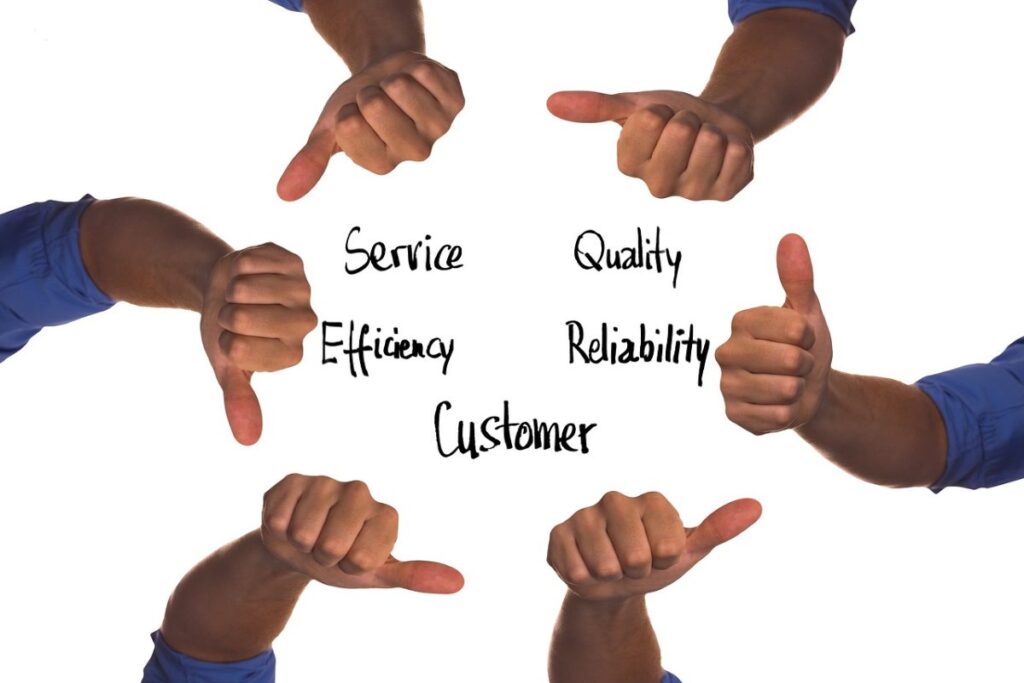Table of Contents
The problem: customer voice is collected everywhere but activated nowhere
Most companies have more customer feedback than they know what to do with. Surveys, interviews, NPS data, community discussions, and review sites all produce valuable insights, yet much of it never gets used. The data ends up in dashboards that look impressive but rarely influence action.
As marketing and product leaders, we pride ourselves on being “customer obsessed,” but the reality is that customer voice often gets trapped in research reports or lost across disconnected tools. At the same time, buyers are doing more independent research than ever. According to B2B SaaS Reviews, 89% of B2B buyers who use review sites say they always or often check them before buying business software. Yet those same customer voices are rarely visible inside the companies that need them most
What follows is a practical, 90-day framework any organization can use to transform scattered customer feedback into orchestrated, measurable impact.
Why this is a content problem, not just a data problem
Customer voice isn’t a single dataset. It’s a living system of feedback, stories, and proof that spans every stage of the customer lifecycle. Marketing uses it to build credibility, product teams use it to guide roadmap decisions, and customer success uses it to improve experience and retention. Yet, because these teams operate in silos, customer voice often becomes fragmented and inconsistent.
Research consistently reinforces its power:
- Over 70 percent of B2B buyers rely on peer reviews and testimonials during vendor evaluation.
- More than 90% of B2B decision-makers trust peers in their industry more than vendor-created content
- 87% of marketers say content marketing builds brand awareness, while 74% say it directly drives demand and lead generation
The takeaway is clear: customer voice already exists across your organization, but it is not orchestrated. Treating it as a strategic content pillar, rather than a static dataset, is the first step toward customer-led growth.
Reframing the opportunity: from advocacy to orchestration
Traditional advocacy programs focus on collecting quotes or case studies. That approach is valuable but narrow. Customer orchestration, by contrast, connects every customer signal, story, and piece of feedback in a structured way so that it can be activated where it matters most.
In practice, customer orchestration means:
- Unifying qualitative and quantitative customer signals into one view
- Classifying and tagging feedback by product, persona, and journey stage
- Delivering insights and stories directly into the workflows of marketing, sales, product, and customer success
For product management, it means having organized insight streams that highlight trends and priorities. For product marketing, it means having a library of proof points tied to personas and outcomes. For customer success, it means identifying advocates and risks early. For marketing, it means fueling campaigns and websites with content built on real customer stories.
A 90-day framework for turning customer voice into activation
Step 1: Audit where customer voice lives and where it gets lost
Timeline: Weeks 1–3
Core contributors: Product marketing, customer success, product management, RevOps
Start by mapping two things:
- Where feedback is currently collected
List every source of customer voice: NPS surveys, support tickets, call notes, community discussions, social listening tools, and win/loss interviews. - Where that feedback should inform action
Identify key decision points and content moments such as product messaging, onboarding, renewal campaigns, or roadmap planning.
For each intersection, document whether the feedback is missing, unstructured, or unused. This gives you a practical roadmap for improvement.
Step 2: Build a shared taxonomy for customer voice
Timeline: Weeks 2–4
Core contributors: Product marketing, content marketing, UX research
To activate customer voice, you need to organize it in a way that everyone can understand. Create a shared taxonomy that defines:
- Content types: quotes, short stories, full case studies, or insight summaries
- Classifications: industry, persona, lifecycle stage, outcome type, or sentiment
- Usage context: funnel stage, channel, or team owner
This structure makes it easier for anyone in your company to find the right story or data point when they need it.
Step 3: Run a 90-day “Collect–Orchestrate–Activate” program
Timeline: Weeks 4–12
Core contributors: Cross-functional “customer voice squad” with members from marketing, product, and customer success
- Collect: Identify moments when customers are most willing to share feedback or proof, such as after go-live, renewals, or product milestones. Standardize how you capture this input and make it easy for teams to contribute.
- Orchestrate: Centralize everything into one shared workspace, even if it starts as a structured spreadsheet. Tag content consistently and use AI to classify sentiment and themes.
- Activate: Test where orchestrated customer voice can have the biggest impact. Add short proof points to landing pages, insert real stories into nurture emails, or showcase customer results in onboarding flows.
Research shows that authentic customer stories increase engagement and conversion across channels. Instead of producing new assets from scratch, repurpose the stories your customers have already shared.
Step 4: Measure the results that leaders care about
Measurement turns customer voice from a “nice-to-have” program into a revenue driver. Track three categories of metrics:
- Input metrics: volume of stories collected, coverage across segments, and new advocates identified
- Engagement metrics: page engagement, conversion rates, and content usage across teams
- Business outcomes: impact on pipeline velocity, deal win rates, product adoption, and renewal rates
For example, if pages with authentic customer proof convert 20 percent better than those without, or if win rates improve in deals where real customer stories were used, you can quantify the return on orchestrating customer voice.
Where this approach works best
This framework is effective across industries where trust and evidence drive decisions, including B2B SaaS, fintech, healthtech, cybersecurity, and professional services. These are markets where buyers are risk-conscious and highly influenced by peer validation. Orchestrating customer voice allows marketing, product, and CX leaders to build credibility faster, personalize experiences, and demonstrate value more clearly.
Implementation typically takes 60 to 90 days using existing systems and a small cross-functional team. As organizations mature, many adopt an AI-powered customer orchestration platform to automate classification, activation, and measurement at scale.
Bringing it all together
The issue for most companies isn’t a lack of customer data. It’s a lack of orchestration. Voice of the Customer initiatives and advocacy programs often collect valuable insights that never reach the teams or moments where they can make an impact.
By treating customer voice as a core content pillar and following a disciplined “Collect-Orchestrate-Activate” model, marketing, product, and customer success leaders can transform static feedback into continuous intelligence that shapes strategy and drives growth.
Customer-led growth starts when the voices you collect begin to move the business forward.
Author Bio

Shawnna Sumaoang is the Chief Marketing Officer at Deeto, an AI-powered customer orchestration platform that unifies customer signals and voice to drive customer intelligence, activation, and customer-led growth. She has built customer marketing, product marketing, and community programs for high-growth B2B SaaS companies and hosts the “Authentic Customer Voices” podcast, featuring leaders in marketing, product, and customer experience.

